 |
BMe Research Grant |

|
Doctoral School of Electrical Engineering
Department of Measurement and Information Systems
Supervisor: Dr. Gábor Péceli
Investigation of Multicarrier Schemes for Cognitive Radio Applications
Introduction of the research area
Following the analog-to-digital television broadcast changeover (expected to be completed by 2015 in Hungary) multiple frequency bands will become available for use. Cognitive radio targets the economic exploitation of these spare frequencies. It is planned that opportunistically communicating, intelligent radio systems will use the new frequencies for data communication purposes. As the incumbent users of the concerned bands will still be the broadcast systems, the cognitively communicating radios must employ high-level intelligence and fast spectral sensing to avoid interfering with them. These circumstances lead to special requirements for the physical layer of the communication system (the applied modulation). My research focuses on the investigation and implementation of suitable modulation schemes, and also on the elaboration of related digital signal processing methods.
Brief introduction of the research place
I performed my research at two university departments (Department of Measurement and Information Systems, MIT, and Department of Broadband Infocommunications and Electromagnetic Theory, SZHVT), which enabled me combining the research areas of these departments. I addressed measurement technology related issues with the support of the Embedded Systems Group of the MIT Dept.; radio frequency measurements were performed at the Rohde & Schwarz Reference Laboratory and the Digital and Optical Communication Systems Group of the SZHVT Dept.
History and context of the research
The spread of wireless communication has been accompanied by the users' emerging need for more bandwidth. However, the available spectrum is limited. This issue is addressed by the solution proposed in the 1999 paper of Mitola [1], where the idea of cognitive radio was introduced. Cognitive radio is a secondary (opportunistic) system capable of exploiting the selected bands intelligently and adaptively, while not disturbing the primary (incumbent) systems, which use the same frequency resource. To enable this, cognitive stations must almost simultaneously transmit data and measure the spectrum to prevent the disturbance of the incumbent systems if they start their transmission [2]. The IEEE standard no. 802.22 aims to standardize such systems [3,4].
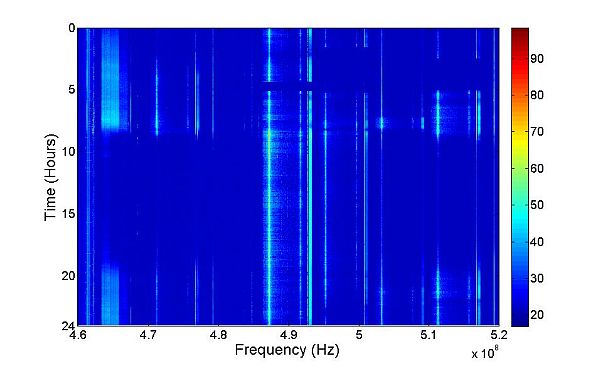
Figure 1.: 24 hour spectrum measurement in Hungary, near Szolnok
(The unused spectral bands are visible).
This technology might have a significant role in the future in Hungary. By 2015, analog television broadcasts will be have been completely substituted by digital broadcast systems, which require less total bandwidth. The use of cognitive radio systems is an evident choice for the economic exploitation of the new available frequencies (white space, WS). In my research I examined and compared the multi-carrier modulation schemes which had the most promising characteristics for the opportunistic use of WS. Considering multi-carrier systems, the use of OFDM [6] (Orthogonal Frequency Division Multiplexing), a well-established technique, seems evident. Multiple wireless communication systems employ this technique, such as DVB-T (Digital Terrestrial Video Broadcast), DAB (digital radio broadcast) and WLAN (wireless computer networks). However, other modulation schemes might also be used, some of which show better characteristics from certain perspectives.
The research was carried out within the framework of the QoSMOS (Quality of Service and MObility driven cognitive radio Systems) FP7 EU project, leading the Hungarian team by Dr. János Bitó.
Aim of the research
The primary aim of the QoSMOS project was to develop the spectral measurement and management features, the network structure and also to produce a demonstration device. The task of BME was to develop the modulation scheme, including the elaboration of transmit and receive algorithms, baseband digital signal processing and also the signal structure.
Apart from spectral measurements, another important physical layer related issue of cognitive radio is the selection of the modulation scheme. In addition to OFDM, three alternative multi-carrier modulation schemes were investigated, each of which show specific advantages over OFDM [K1],[K2]: These investigated schemes were DFT-Spread OFDM [7, 8] (DFTS-OFDM), Constant Envelope OFDM [9] (CE-OFDM) and Filter Bank Multicarrier [10, 11] (FBMC).
The schemes were compared on the basis of various properties. One of the most important features was the spectral characteristics, including adjacent channel leakage [K8]. An additional and not less important aspect was the modulation scheme's sensitivity to the errors introduced by analog components (amplifiers, mixers) [K1].
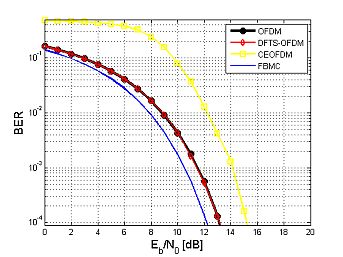
Figure 2.: Bit error rates of the investigated modulation schemes over AWGN channel.
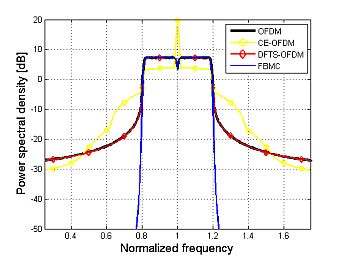
Figure 3.: The power spectral density function of the four modulation schemes.
Methodology
Simulation environment
A simulation environment was implemented in MATLAB, where the various characteristics can be evaluated both on the transmitter and the receiver side. Further investigations can be performed regarding the nonlinearities in the transmission chain and the effects of the additive noise. The digital signal processing algorithms can also be tested and evaluated in a straightforward and fast manner.
The effects of various errors are best represented by bit error rate curves. The signal's bandwidth and the nonlinear effects can be evaluated on the basis of the transmitted signal's power spectral density.
Furthermore, following the simulations, it is important to develop hardware-based implementation, where the generated signals can be measured. The final step is the comparison of simulated and measured results.
Hardware implementation
Following the simulations, the transmitter and receiver algorithms can be easily implemented and evaluated using a software radio device (USRP - Universal Software Radio Peripheral, Fig. 4.). Two USRP modules performs up- and down conversion, therefore the processing of the transmit and receive digital samples had to be implemented only (Fig. 5). The signals were measured using
a spectrum analyzer type R&S FSH3. The final implementation will be performed on a USRP device manufactured by National Instruments.
.
Figure 4.: USRP module (Ettus Research).

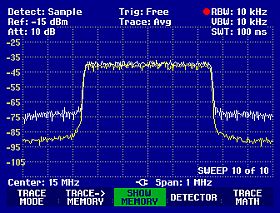
Figure 5.: The test environment and the measured OFDM/FBMC (white/yellow) spectrum.
Results
Investigation of the modulation schemes
In my PhD research I compared four multi-carrier schemes which may be suitable for cognitive radio applications. I investigated the effects of various linear and nonlinear distortions, as well as the performance degradation caused by synchronization errors (clock signal, up/down converting frequency, phase and I/Q errors). I analyzed the data transfer capabilities of the modulation schemes, the calculation complexities necessary for their modulation and demodulation, as well as the time domain and spectral properties of the modulated signals [K1], [K2].The brief summary of these investigations is included in Table I.
|
|
OFDM |
DFTS-OFDM |
CE-OFDM |
FBMC |
|
System complexity |
Low |
Moderate |
Moderate |
High |
|
Spectral properties |
Low out-of-band radiation |
Low out-of-band radiation |
DC + out-of-band radiation |
Very low out-of-band radiation |
|
Crest factor |
High |
Moderate |
Low |
High |
|
Data rate |
1-(P/N) |
0.5*(1-(P/N)) |
1-(P/N) |
1 |
Table I.: Comparison of the investigated modulation schemes.
The FBMC modulation scheme
My investigations revealed that, as shown in Figure 3, the moderately known and scarcely used FBMC modulation has the lowest adjacent channel leakage, therefore the focus of my research was on FBMC. I elaborated methods to reduce the crest factor of FBMC systems and algorithms to support channel equalization.
Efficient channel equalization techniques for FBMC
Besides its many advantages, FBMC also has some drawbacks. Such an issue occurs in case of long impulse response channels. Due to the high degree of inter symbol interference, the bit error rate curves of the system do not exhibit any improvement despite the increase of the signal-to-noise ratio. I elaborated new channel equalization procedures to resolve this problem [K3],[K4], which enable the further reduction of the effect of inter symbol interference at the expense of increase in computational complexity (Fig. 6).

Figure 6.: Comparison of the developed channel equalization schemes for FBMC (FBMC-ZF is the common technique presented in the literature [13]).
Peak-to-average power ratio reduction methods for FBMC
Another drawback of FBMC is that the modulated signal has a large crest factor, which leads to performance degradation and adjacent channel leakage in case of nonlinear distortions, phenomena that are unwanted in cognitive radio applications. I elaborated a turbo-decoding based receive algorithm suitable for the compensation of power-limited FBMC signals [K5], which enables the reduction of the effects of nonlinear distortions in the receiver and helps improve performance. Another option for the reduction of the large crest factor is the advance signal processing in the transmitter, in such cases the receive algorithms need not to be modified. I elaborated a new FBMC transmit structure, based on the adaptation of OFDM techniques and iterative power limitation. With the aid of these procedures the dynamic range of the modulated signal can be reduced severely, at the cost of only a minor increase in the transmit power [K6].
Application of recursive DFT in cognitive radio scenarios
Another important aspect of cognitive radio applications is the continuous monitoring of the spectrum, which is mostly performed by an FFT algorithm. I have proved that the observation-principle based recursive DFT [12] (Fig. 7) used in measurement technology can be applied for continuous spectrum monitoring [K7]. Another advantage is that the R-DFT procedure requires considerably less calculation than the repetition of FFT for each sample in sliding manner. Besides, in case of FBMC, averaging-based channel equalization [K3] can also be implemented with less computation complexity by applying R-DFT.
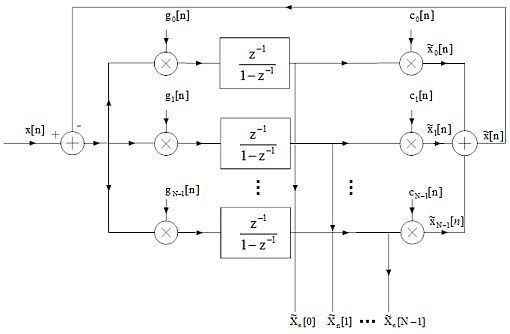
Figure 7.: Structure of the observer-based recursive DFT.
Expected impact and further research
FBMC gets increasing attention due to its favorable spectral properties. There is a good chance for this modulation scheme to become the standard for cognitive radios. My primary goal is to implement a real time data transmission link on a USRP hardware, where the crest factor reduction procedures, channel equalization algorithms and receive-side signal processing techniques can be tested. My aim is to create a transceiver device for demonstration purposes, enabling the presentation of FBMC signals and their cognitive radio related applications. We intend to establish the FBMC test environment in close co-operation with National Instruments, as well as to make it available for the industry and use it for transmission measurements in the education of students.
The elaboration of procedures suitable for clock signal, frequency and phase error synchronization in FBMC data transfer, along with the development of channel estimation methods are still open questions. First, I intend to examine these in a test environment, followed by the actual hardware-based implementation. Furthermore, it is also my aim to reveal the further improvement opportunities of R-DFT for synchronization purposes.
Publications, references, links
Publications
[K1]. Zsolt Kollár, Péter Horváth: Modulation Schemes for Cognitive Radio in White Spaces. RADIOENGINEERING 19:(4) pp. 511-517. (2010) - [link]
[K2] Zsolt Kollár, Lajos Varga, Péter Horváth: Modern többvivős rendszerek kognitív rádiós alkalmazásokban. (in Hungarian), HÍRADÁSTECHNIKA 56:(3) pp. 18-22. (2011) - [link]
[K3] Zsolt Kollár, Péter Horváth, Gábor Péceli: Iterative Decision Feedback Equalization for Filter Bank Multicarrier Systems. The First International Conference on Advances in Cognitive Radio: COCORA 2011. Budapest, Hungary, 2011. Paper 60056. - [link]
[K4] Zsolt Kollár, Péter Horváth: Equalization of Multicarrier Cognitive Radio Transmissions over Multipath Channels with Large Delay Spread. INFOCOMMUNICATIONS JOURNAL 3:(2) pp. 42-47. (2011) - [link]
[K5] Zsolt Kollár, Péter Horváth: PAPR Reduction of FBMC by Clipping and its Iterative Compensation. JOURNAL OF COMPUTER NETWORKS AND COMMUNICATIONS 2012:(2012) pp. 1-11. Paper 382736. (2012) - [link]
[K6] Zsolt Kollár, Lajos Varga, Kristóf Czimer: Clipping-Based Iterative PAPR-Reduction Techniques for FBMC. OFDM-Workshop 2012. Essen, Germany, Paper OFDM12-10. - [link]
[K7] Lajos Varga, Zsolt Kollár, Péter Horváth: Recursive Discrete Fourier Transform based SMT Receivers for Cognitive Radio Applications. 19th International Conference on Systems, Signals and Image Processing, IWSSIP 2012. Vienna, Austria, Paper 1569530899. - [link]
[K8] Vincent Berg, Zsolt Kollár, Rohit Datta, Péter Horváth, Dominique Noguet, Gerhard Fettweis: Low ACLR communication systems for TVWS operation. Future Network & Mobile Summit 2012. Berlin, Germany, Paper 146. - [link]
Full publication list (BME-PA)
References
[1] Mitola, J. and Maguirem, G. Q.: Cognitive radio: Making software radios more personal. IEEE Personal Communications, vol. 6, no. 4. , pp. 13 – 18, Aug. 1999.
[2] Qing Zhao and Sadler, B.M.: A Survey of Dynamic Spectrum Access. IEEE Signal Processing Magazine, vol. 24, no.3, pp.79-89, May 2007.
[3] IEEE 802.22 Working Group on Wireless Regional Area Networks. [Online]. Available: http://www.ieee802.org/22/
[4] Cordeiro, C., Challapali, K., Birru, D., Shankar, S.: IEEE 802.22: The first worldwide wireless standard based on cognitive radios. IEEE International Symposium on Dynamic Spectrum Access Networks DySPAN, Baltimore, USA, pp.328–337, 2005.
[5] Nekovee, M.: A survey of cognitive radio access to TV White Spaces. 2009 ICUMT‘09. Int. Conf. on Ultra Modern Telecom. and Workshop, pp.1–8, 12-14 October 2009.
[6] van Nee, R. and Prasad R.: OFDM for Wireless Multimedia Communications. Artech House, Boston, USA, 2000
[7] Hyung G. Myung, Junsung Lim, David J. Goodman: Single Carrier FDMA for Uplink Wireless Transmission. IEEE Vehicular Technology Magazine, Vol. 1, No. 3, pp. 30-38, Sep. 2006.
[8] D. Galda and H. Rohling: A low complexity transmitter structure for OFDM-FDMA uplink systems. Vehicular Technology Conf., VTC Spring 2002, IEEE 55th, Vol. 4, pp.1737–1741, 2002.
[9] S.C. Thompson, A.U. Ahmed, J.G. Proakis, J.R. Zeidler, M. J. Geile: Constant envelope OFDM. Transactions on Communications, Vol. 56, No.8, pp.1300–1312, August 2008.
[10] F. Schaich: Filterbank based multi carrier transmission (FBMC) – evolving OFDM: FBMC in the context of WiMAX. 2010 European Wireless Conference (EW), pp.1051–1058, 2010.
[11] P. Siohan, C. Siclet, N. Lacaille: Analysis and design of OFDM/OQAM systems based on filterbank theory. IEEE Trans. on Signal Processing, Vol. 50, No.5, pp.1170–1183, 2002.
[12] G. Péceli: A common structure for recursive discrete transforms. IEEE Transactions on Circuits and Systems, vol. 33, no. 10, pp. 1035 – 1036, Oct. 1986.
[13] T. Ihalainen, T. H. Stitz, M. Rinne, and M. Renfors: Channel equalization in filter bank based multicarrier modulation for wireless communications. EURASIP Journal Appl. Signal Process., 2007.
Links
Cognitive Radio - Mitola’s paper on cognitive radio
Nokia Research Center - NRC Presents Cognitive Radio (short video clip)
